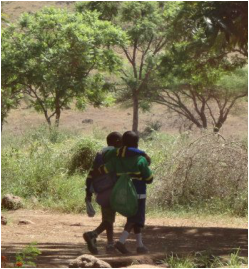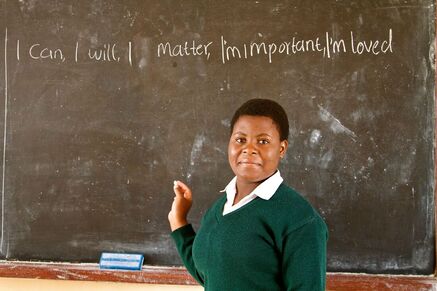
THE TWIN CHALLENGES
The Power of International Learning...
It’s not hard to imagine the many benefits associated with international learning. Indeed, study after study has documented its positive impacts. For example, the Institute for the International Education of Students conducted the first, large scale, longitudinal study of the benefits of such experiences among more than 3400 people covering some fifty years and found that:
It’s also not hard to imagine that, almost by definition, the bulk of individuals who are in a position to participate in such programs come from the higher income strata; most are white; most are in college or are clearly college bound. For those of lesser economic means, access to these programs is extremely limited and the costs often prohibitive.
And the STEM Imperative
According to the National Science Foundation our nation faces well documented and substantial gender, race and ethnicity gaps in Science, Technology, Engineering and Math (STEM). Moreover, as the research focus moves from the classroom to the workforce, the disparities do not change: Hispanics, blacks and American Indians/Alaska Natives comprise just 11% of the technology workforce despite representing over 27% of the population. Studies also show that women make up half of the total U.S. college-educated workforce, but only 29% of the science and engineering workforce.
In simple terms, these persistent gaps not only exacerbate existing social and economic imbalances; for a nation that will soon be a “major minority” they present a sobering reality for our economic future.
Imagine this.
What if you could bring the power and impact of international learning to high performing, but nonetheless at-risk inner-city female youths? What if these young women were given the opportunity to experience what those thousands of alumni reported in the IES survey: enhanced self-confidence, increased maturity, life-long impact?
What if, at the same time, you could provide access to a STEM-related experience for these youth?
And what if you could combine that experience with the equally powerful benefits of service, of sharing of yourself, and of giving to others?
THAT IS WHAT THE NDARAKWAI EXPERIENCE IS ALL ABOUT.
The Power of International Learning...
It’s not hard to imagine the many benefits associated with international learning. Indeed, study after study has documented its positive impacts. For example, the Institute for the International Education of Students conducted the first, large scale, longitudinal study of the benefits of such experiences among more than 3400 people covering some fifty years and found that:
- 97% reported that their international learning experience had “served as a catalyst” for increased maturity
- 96% reported that their experience led to increased self-confidence.
- More than 70% reported that the experience continues to impact the decisions they make in their daily lives.
It’s also not hard to imagine that, almost by definition, the bulk of individuals who are in a position to participate in such programs come from the higher income strata; most are white; most are in college or are clearly college bound. For those of lesser economic means, access to these programs is extremely limited and the costs often prohibitive.
And the STEM Imperative
According to the National Science Foundation our nation faces well documented and substantial gender, race and ethnicity gaps in Science, Technology, Engineering and Math (STEM). Moreover, as the research focus moves from the classroom to the workforce, the disparities do not change: Hispanics, blacks and American Indians/Alaska Natives comprise just 11% of the technology workforce despite representing over 27% of the population. Studies also show that women make up half of the total U.S. college-educated workforce, but only 29% of the science and engineering workforce.
In simple terms, these persistent gaps not only exacerbate existing social and economic imbalances; for a nation that will soon be a “major minority” they present a sobering reality for our economic future.
Imagine this.
What if you could bring the power and impact of international learning to high performing, but nonetheless at-risk inner-city female youths? What if these young women were given the opportunity to experience what those thousands of alumni reported in the IES survey: enhanced self-confidence, increased maturity, life-long impact?
What if, at the same time, you could provide access to a STEM-related experience for these youth?
And what if you could combine that experience with the equally powerful benefits of service, of sharing of yourself, and of giving to others?
THAT IS WHAT THE NDARAKWAI EXPERIENCE IS ALL ABOUT.

